Introduction
A beloved Southern classic, pimento cheese has gained popularity recently, particularly for its potential to help with weight loss. Usually created with cheese, mayonnaise, and pimentos, this creamy mixture has a rich, decadent flavor profile that has satisfied a lot of palates. Still, it’s important to know the nutritional makeup of pimento cheese before delving into “Is Pimento Cheese Good for Weight Loss?”
In the middle of the plethora of diet fads and weight reduction techniques, people frequently question how certain foods, like pimento cheese, fit into their overall health objectives. Pimento cheese is a tempting option for many due to its versatility as a spread, dip, or sandwich filling. But the issue still stands: is it possible to indulge in this delicious treat while still trying to lose weight?
After more investigation, we find that although pimento cheese certainly provides a flavor boost, its nutritional makeup can cause problems for individuals trying to lose weight. Pimiento cheese is one of those decadent delicacies that should be enjoyed in moderation because it’s high in calories, saturated fats, and frequently additional sodium. This is especially true for those who are actively trying to lose weight. Although it can be occasionally enjoyed as part of a balanced diet, making wise decisions and controlling portion sizes are essential to successfully incorporating it into a weight loss program.
Understanding Pimento Cheese
A popular Southern classic, pimento cheese enchants with its tart flavor and creamy texture. Usually made with a mixture of spicy mayonnaise, chopped pimentos, sharp cheddar cheese, and spices, this spreadable treat has a nice balance of salty and slightly sweet flavors. Pimentos, a red chili pepper prized for its vivid color and mild spice, is added for a unique flavor that enhances the dish’s overall appeal. Pimento cheese’s enticing taste invites whether it’s spread on crackers, packed into sandwiches, or served as a dip.
Although the taste of pimento cheese may entice the senses, its nutritional composition demands more investigation, particularly for individuals who are conscious of their dietary consumption. Because of the large amounts of cheese and mayonnaise that go into making it, this decadent spread—high in calcium and protein from the cheese—also has a high-calorie count. Furthermore, the fact that traditional recipes contain sodium and saturated fats emphasizes the importance of moderation—especially for those trying to control their weight or maintain heart health. Conscious intake is essential to balance enjoyment and nutritional well-being, even with its culinary allure.
A beloved emblem of coziness and hospitality, pimento cheese is deeply ingrained in the culinary fabric of Southern cuisine. This modest yet adaptable recipe, which dates back to the early 20th century, became well-known throughout the Southern United States and was frequently served at picnics, family get-togethers, and social events. Its place as a Southern mainstay has been cemented by its ease of preparation and capacity to go well with various foods, representing the region’s heritage of enjoying robust, savory food. Pimento cheese is a cultural symbol that never goes out of style. It enchants palates and brings back happy memories of shared meals and social gatherings.
Nutritional Analysis of Pimento Cheese
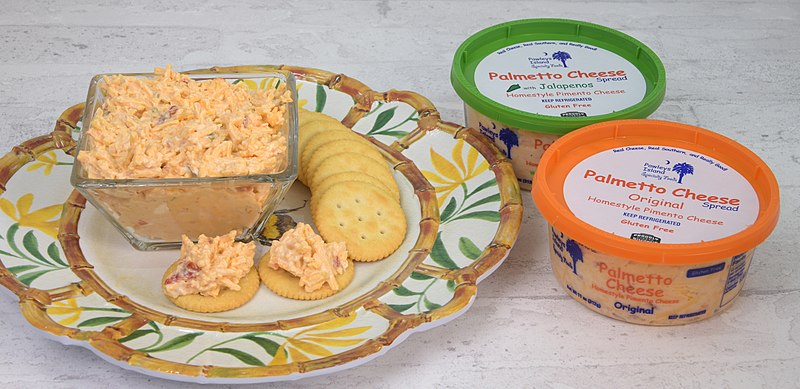
Examining the nutritional makeup of pimento cheese provides important information for people thinking about using it to aid in their weight loss. With only about 375 calories per 100 grams, this delicious spread has a high energy content. Regarding the macronutrient makeup, pimento cheese provides a significant amount of fat—31 grams per serving. Although lipids are necessary for fullness and general health, it’s important to recognize that saturated fats—of which 20 grams per 100 grams of pimento cheese—dominate.
Navigating the Saturated Fat Conundrum: Implications for Heart Health
Pimento cheese’s high saturated fat content should be carefully considered, especially considering its possible effects on cardiovascular health. Excessive consumption of saturated fats has been associated with higher levels of low-density lipoprotein (LDL), also known as “bad” cholesterol. Since elevated low-density lipoprotein (LDL) levels are a recognized risk factor for heart disease, moderation is crucial when including pimento cheese in one’s diet. While the occasional indulgence is acceptable, it can be less harmful to heart health if combined with heart-healthy foods like fruits, vegetables, and whole grains.
Sodium Levels: One noteworthy feature of pimento cheese is its 1,428 mg of salt per 100 grams. Elevated consumption of sodium has been associated with hypertension, a notable risk factor for heart disease. Traditional pimento cheese recipes often contain processed ingredients like cheese and mayonnaise, so watch how much sodium you eat—especially if you have high or are trying to maintain normal blood pressure. Choosing homemade versions with a regulated salt content or low-sodium alternatives can provide a healthier option without sacrificing flavor.
Making Pimento Cheese Healthier
Exploring Healthier Alternatives
Nutrient-dense options arise when classic pimento cheese recipes are updated with healthy substitutes. Using low-fat cheeses as the foundation is one tactic that drastically lowers the total calorie and fat content without sacrificing flavor. These cheeses maintain the creamy richness that characterizes pimento cheese but with a lighter texture.
Lightening Up with Greek Yogurt
Another way to improve the nutritional profile of pimento cheese is to use Greek yogurt instead of mayonnaise. Greek yogurt gives the spread a zesty touch and adds protein and probiotics to support digestive health and fullness. This easy substitution reduces saturated fats and unnecessary calories, making it a wise option for anyone watching their weight without compromising flavor.
Fresh vs. Canned: Elevating Flavor and Nutrition
Choosing fresh pimentos over canned cans can significantly impact the nutritional content and flavor. The bright flavor profile and vitamin and antioxidant power of fresh pimentos increase the dish’s overall health factor. Fresh pimentos provide every bite a blast of color and freshness, whether served as a garnish or chopped and mixed into the cheese mixture.
Pairing with Wholesome Accompaniments
Sensible matching with healthful accompaniments completes the transition to a healthier pimento cheese experience. Replace conventional white bread or crackers with nutrient- and fiber-dense whole-grain alternatives. Alternatively, for a delightful crunch that balances the creamy spread, serve alongside a colorful array of fresh veggies, including crisp cucumber slices, crunchy carrot sticks, and brilliant bell pepper strips. By adopting these straightforward yet powerful tactics, you can revel in the delectable appeal of pimento cheese while promoting your overall well-being and weight loss objectives.
Pimento Cheese in a Healthy Diet
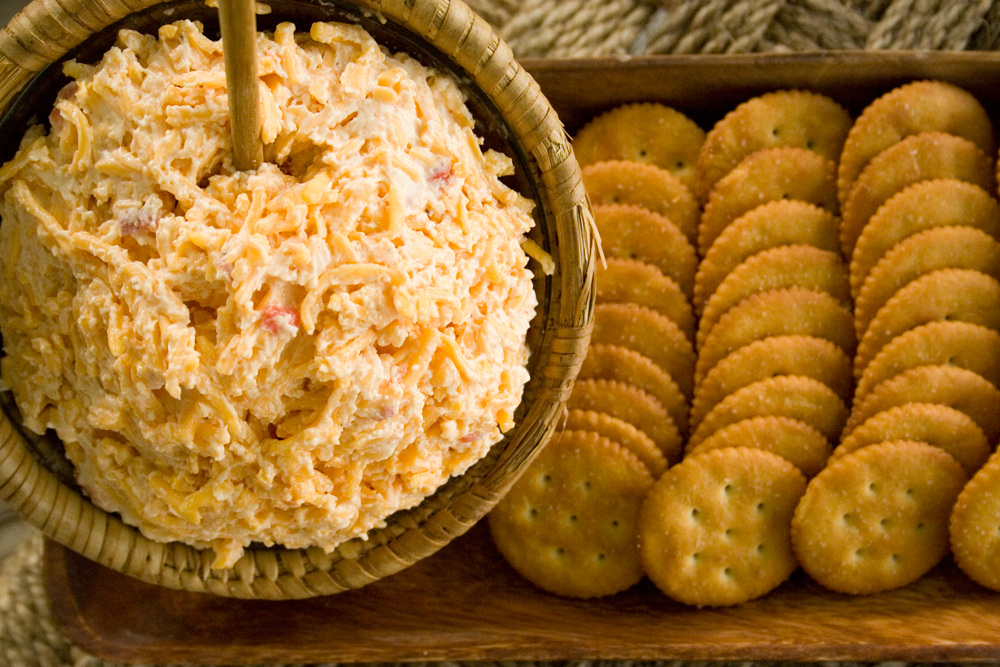
Can Pimento Cheese Be Part of a Healthy Diet?
Whether pimento cheese can be included in a healthy diet relies on moderation and thoughtful consumption. Although pimento cheese has a rich and decadent flavor profile, individuals trying to lose weight or improve their general health may find it difficult to consume due to its high calorie, fat, and sodium content. However, it can be included in a balanced diet plan that allows occasional enjoyment without impeding progress.
Moderation as the Key Principle
Moderation becomes the key when incorporating pimento cheese into your diet. Eating it occasionally as a treat instead of making it a regular part of your diet can help you control your calorie consumption and keep your nutritional profile balanced. You can still enjoy the creamy richness of pimento cheese without sacrificing your health objectives if you eat fewer servings and couple it with meals high in nutrients.
Pairing Pimento Cheese with Other Healthy Options
To optimize the nutritional value of pimento cheese, it should be carefully combined with other healthful foods. To make a well-balanced and filling lunch or snack, try serving it with a colorful array of fresh veggies, whole-grain crackers, or lean protein sources. To boost satiety and improve nutrient absorption, use high-fiber foods such as sliced apples, crisp carrots, or leafy greens that balance out the flavorful richness of pimento cheese.
Final Thoughts
Even though it might not be the number one superfood for weight reduction, pimento cheese can still be part of a varied and balanced diet when eaten in moderation. You can create a harmonious balance between indulgence and nutritional integrity by consuming it mindfully and with nutrient-dense accompaniments. Remember that moderation, diversity, and overall dietary consistency are crucial to support your journey toward optimal health and well-being.
Healthier Alternatives to Pimento Cheese
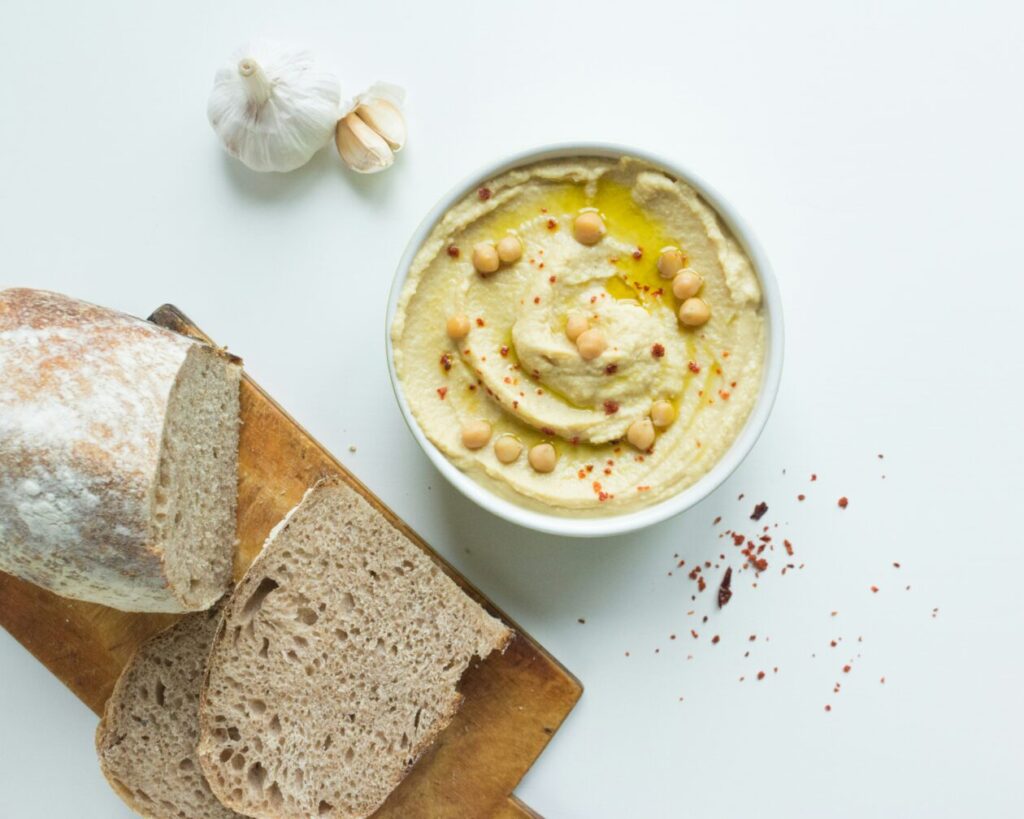
Unquestionably, pimento cheese has a flavorful, rich taste, but its high fat and calorie content may not be suitable for everyone’s diet. Thankfully, a delicious selection of healthy substitutes satisfies flavor and nutrition demands. These substitutes not only offer a refreshing change of pace but also enrich your diet with essential nutrients. Let’s look at some healthy alternatives that can replace delectable pimento cheese.
- Hummus: A great substitute for pimento cheese is hummus, a popular Middle Eastern dip composed of chickpeas, tahini, olive oil, lemon juice, and garlic. Hummus has a lovely blend of flavors and a satisfyingly creamy texture. It is rich in protein, fiber, and healthy fats. Hummus is a highly nutritious and adaptable option for health-conscious people, whether spread on whole-grain toast or as a dip for fresh vegetables.
- Guacamole: This is a great option for avocado lovers looking for a nutrient-dense, creamy substitute for pimento cheese. A powerful source of heart-healthy monounsaturated fats and vital vitamins and minerals, guacamole is made with mashed avocados, onions, tomatoes, cilantro, lime juice, and seasonings. To enhance your snacking experience, try it with crispy carrot sticks and whole-grain crackers or as a tasty addition to salads and sandwiches.
- Bean Dip: Made with various legumes, including kidney, cannellini, and black beans, bean dips provide a powerful flavor profile that is both gratifying and nutrient-dense. Bean dips are high in fiber, protein, and complex carbs, which help you feel full and have energy for a long time. To make your dip unique to your tastes, try experimenting with different bean kinds and flavor combinations, adding things like cumin, jalapeños, or roasted garlic.
- Veggie Spread: Make a colorful spread with fresh veggies as the main component for a lighter take on classic dips. For a creamy and nourishing spread, blend roasted red peppers, artichoke hearts, spinach, or roasted eggplant with low-fat cream cheese or Greek yogurt. This alternative offers a variety of vitamins, minerals, and antioxidants, but it also tastes great and gives a cool burst of flavor that goes well with many other dippable treats.
- Nut Butter: Usually connected with desserts, nut butter can also be a tasty and healthy spread substitute for pimento cheese. Select natural types without additional sweeteners and hydrogenated oils, such as those made from peanuts, cashews, or almonds. Spread nut butter on apple slices or whole-grain crackers for a filling, high-fiber, high-protein snack. Additionally, to improve the flavor profile of your nut butter spread, try experimenting with savory additions like sea salt or smoky paprika.
In summary, incorporating more nutritious pimento cheese substitutes into your diet can increase the variety of foods you may prepare and the amount of nutrients you consume. Whether you prefer the fresh flavors of guacamole, the creamy goodness of hummus, or the robust goodness of bean dip, these healthy substitutes offer a delectably satisfying method to sate your desires while promoting your fitness and health objectives. Try various recipes, textures, and flavor profiles to find the ideal spread or dip that fits your dietary requirements and personal tastes.
Incorporating Pimento Cheese Responsibly
Portion control is essential while consuming pimento cheese as a healthy diet. Even though this savory and creamy spread can be a delightful addition to meals and snacks, serving proportions must be considered. Limit your intake of pimento cheese by choosing smaller servings to prevent consuming too many calories. Generally speaking, you should only have one or two tablespoons of food at a time, particularly if you manage your calorie intake to lose weight.
Even while pimento cheese can be a delicious treat, consuming it in moderation is recommended, especially if you’re trying to lose weight. Instead of pimento cheese being a regular treat, think about including it occasionally in your diet. You may enjoy its rich flavors without going overboard with calories or fat if you approach it as a pleasure rather than a daily requirement. To balance enjoyment with health-conscious choices, save pimento cheese for special occasions or as an occasional splurge.
It is imperative to balance the consumption of pimento cheese with other dietary choices to maintain a well-rounded and balanced diet. Pimento cheese’s high fat and calorie content can be countered by eating it alongside meals high in nutrients, such as lean proteins, whole-grain crackers, or fresh vegetables. If you want to satisfy your cravings for your favorite foods and ensure you’re giving your body the nourishment it needs, try having pimento cheese as part of a well-balanced meal or snack with other healthful meals.
In summary, pimento cheese can be a tasty addition to your cooking skills, but you should always consume it in moderation, particularly if you’re trying to lose weight. You may savor the creamy goodness of pimento cheese while promoting your overall health and wellness objectives by controlling your portion sizes, consuming it in moderation, and balancing it with other nutrient-dense meals. To ensure a fulfilling and long-lasting approach to adding pimento cheese to your diet, keep in mind to actively savor each bite and pay attention to your body’s signs.
Addressing Specific Concerns
Is Pimento Cheese Safe During Pregnancy?
Pregnancy comes with many dietary considerations, and pimento cheese is no exception. While pimento cheese can be a delicious addition to meals, especially for those craving a savory snack, pregnant individuals should exercise caution due to the risk of listeriosis. Listeriosis is a foodborne illness caused by the bacterium Listeria monocytogenes, which can lead to serious complications during pregnancy, including miscarriage, premature birth, or infection of the newborn. Pregnant individuals are advised to avoid consuming unpasteurized cheeses, including many pimento cheese varieties, to minimize the risk of listeriosis. Opting for pasteurized versions of pimento cheese and enjoying it in moderation can help reduce the risk while satisfying cravings.
Can Pimento Cheese Trigger Migraines?
Migraines are a complex neurological condition that various factors, including dietary choices, can influence. For some individuals, certain foods and ingredients, such as aged cheeses like cheddar or blue cheese, may trigger migraine episodes. While pimento cheese typically contains aged cheddar cheese as a base, other ingredients, such as pimentos and mayonnaise, may affect how it interacts with migraine triggers. However, the specific impact of pimento cheese on migraines can vary from person to person. Suppose you suspect that pimento cheese or other food may trigger your migraines. In that case, keeping a food diary and working with a healthcare professional to effectively identify and manage potential triggers is essential.
Should Individuals with High Blood Pressure Avoid Pimento Cheese?
High blood pressure, or hypertension, is a common health concern that requires careful attention to dietary sodium intake. Like many other cheese-based products, Pimento cheese can be high in sodium, which may contribute to elevated blood pressure levels when consumed in excess. For individuals with high blood pressure or those looking to maintain optimal heart health, it’s important to be mindful of the sodium content in foods, including pimento cheese.
Choosing low-sodium or reduced-sodium varieties of pimento cheese or enjoying it in moderation as part of a balanced diet can help individuals with high blood pressure incorporate this indulgent treat without negatively impacting their cardiovascular health. Consulting with a healthcare provider or registered dietitian for personalized dietary recommendations is recommended for individuals managing high blood pressure or other cardiovascular conditions.
Is Pimento Cheese Good for Weight Loss?
A. Short Answer:
Pimento cheese, while delicious, may not be the best choice for those aiming to lose weight due to its high calorie, fat, and sodium content.
B. In-Depth Analysis:
When considering whether pimento cheese is suitable for weight loss, it’s essential to understand its nutritional profile. Pimento cheese typically consists of cheese, mayonnaise, and pimentos, resulting in a high-calorie and high-fat spread. While cheese can provide protein and calcium, it also contains saturated fats, which, when consumed in excess, can contribute to weight gain and other health issues. Additionally, the mayonnaise used in pimento cheese adds further calories and fats, often of the less healthy variety.
Moreover, pimento cheese tends to be high in sodium, primarily due to the cheese and mayonnaise. Excessive sodium intake can lead to water retention and bloating, which may mask any progress in weight loss. Furthermore, a diet high in sodium is associated with an increased risk of hypertension and other cardiovascular problems.
While pimento cheese can be enjoyed in moderation as part of a balanced diet, its caloric density and nutrient composition make it less conducive to weight loss efforts than lighter alternatives. Opting for lower-calorie spreads or snacks rich in fiber and protein may be a more effective strategy for those looking to shed pounds.
In summary, while pimento cheese can be a tasty treat, more suitable options for individuals focused on weight loss exist. Its high calorie, fat, and sodium content may hinder progress toward weight loss goals. However, occasionally enjoying it as part of a well-rounded diet can still be acceptable for those mindful of portion sizes and overall caloric intake. Incorporating healthier alternatives and focusing on nutrient-dense foods is key for sustainable weight loss.
Additional Value
Description and Taste: Pimento cheese, a beloved Southern staple, is a creamy and tangy spread made primarily with sharp cheddar cheese, mayonnaise, and diced pimentos. Its flavor profile combines the richness of cheese with the subtle sweetness of the pimentos, resulting in a unique and satisfying taste experience. Depending on personal preference and regional variations, pimento cheese can vary in texture, ranging from smooth and spreadable to chunky and textured.
Nutritional Components and Variations: Understanding the nutritional components of pimento cheese is essential for making informed dietary choices. While it provides protein and calcium from the cheese, it is also high in calories, saturated fats, and sodium, which may not align with weight loss goals for some individuals. However, there are ways to modify traditional pimento cheese recipes to make them healthier, such as using low-fat cheeses, Greek yogurt instead of mayonnaise, and incorporating fresh vegetables for added nutrients and fiber.
Recipes and Versatility: Pimento cheese is incredibly versatile and can be enjoyed in various ways beyond just a spread for crackers or sandwiches. Numerous recipes and variations are available to suit different dietary preferences and occasions. For example, you can use pimento cheese as a veggie dip or a topping for burgers or baked potatoes or even incorporate it into grilled cheese sandwiches or stuffed peppers. Experimenting with different ingredients and flavor combinations allows for endless creativity and customization when enjoying pimento cheese as part of a balanced diet.
Practical Tips for Making and Enjoying Pimento Cheese
Recipe Variations for Healthier Pimento Cheese
To make pimento cheese healthier, consider using low-fat or reduced-fat cheese options and substituting mayonnaise with Greek yogurt for a lighter texture and added protein. Additionally, incorporate fresh herbs, spices, and vegetables like spinach or bell peppers to enhance flavor and nutrient content without compromising taste.
Serving Suggestions and Creative Ideas
Pimento cheese can be enjoyed in various ways beyond just a spread for crackers or sandwiches. Try using it as a filling for stuffed celery sticks, topping for baked potatoes, or a dip for crunchy vegetable sticks. Get creative with serving options to make pimento cheese a versatile and satisfying addition to meals and snacks.
Selecting Healthier Store-Bought Options
When purchasing store-bought pimento cheese, choose options with simpler ingredient lists and fewer additives. Look for varieties made with real cheese and natural ingredients, avoiding those with excessive preservatives or artificial flavors. Additionally, check the nutrition label for lower calorie, fat, and sodium content to make a more informed choice for your health.
FAQs about Pimento Cheese
Is Pimento Cheese Gluten-Free?
In its traditional form, Pimento cheese is typically gluten-free as it primarily consists of cheese, mayonnaise, and pimentos, none of which contain gluten. However, checking the ingredients carefully is essential, especially if purchasing pre-made or packaged varieties, as some additives or flavorings may contain gluten.
Is Pimento Cheese Vegetarian or Vegan?
Pimento cheese is vegetarian as it does not contain any meat products. However, it is not vegan-friendly due to dairy-based ingredients like cheese and mayonnaise. Vegans can explore alternative recipes that use plant-based cheese substitutes and vegan mayonnaise to create a dairy-free version of pimento cheese.
Can Pimento Cheese Help with Weight Loss?
While pimento cheese can be a delicious addition to meals and snacks, there may be better choices for those specifically aiming for weight loss. Traditional pimento cheese recipes are high in calories, saturated fats, and sodium, which may not align with weight loss goals. However, individuals can modify recipes by using low-fat cheese, Greek yogurt instead of mayonnaise, and incorporating fresh vegetables to make a lighter and more nutritious version suitable for weight management.
Conclusion
In conclusion, pimento cheese can bring flavor and satisfaction to meals and snacks, but its suitability for weight loss objectives varies depending on several circumstances. While traditional dishes may offer some satiety and include protein and calcium from cheese, they are generally heavy in calories, saturated fats, and sodium, which may not be conducive to weight loss. However, people can enjoy pimento cheese in moderation as part of a balanced diet by choosing ingredients carefully and controlling portion sizes.
It’s critical to remember that losing weight is a complex process involving more than just eating certain foods. A varied and pleasurable eating pattern can be achieved by incorporating pimento cheese into a diet high in nutritious grains, lean proteins, fruits, and vegetables. In addition, you can improve its nutritional profile and increase satiety by serving it with nutrient-dense foods like fruit, sliced vegetables, or whole-grain crackers.
In conclusion, it’s important to recognize pimento cheese’s cultural significance and flexibility while partaking in it properly. Served as a traditional Southern spread or reimagined in inventive variations, pimento cheese captures the flavors and culinary traditions that many people love. People can support their health and fitness goals while still enjoying the pleasures of this favorite meal by incorporating it into a well-rounded diet and appreciating it mindfully.
Reference
Maija Ruuth, Lahelma, M., Luukkonen, P. K., Lorey, M. B., Qadri, S., Sanja Sädevirta, Tuulia Hyötyläinen, Kovanen, P. T., Hodson, L., Hannele Yki-Järvinen, & Katariina Öörni. (2021). Overfeeding Saturated Fat Increases LDL (Low-Density Lipoprotein) Aggregation Susceptibility While Overfeeding Unsaturated Fat Decreases Proteoglycan-Binding of Lipoproteins. Arteriosclerosis, Thrombosis, and Vascular Biology, 41(11), 2823–2836. https://doi.org/10.1161/atvbaha.120.315766
Grillo, A., Salvi, L., Paolo Coruzzi, Salvi, P., & Gianfranco Parati. (2019). Sodium Intake and Hypertension. Nutrients, 11(9), 1970–1970. https://doi.org/10.3390/nu11091970
FoodData Central. (2024). Usda.gov. https://fdc.nal.usda.gov/fdc-app.html#/food-details/170854/nutrients
Was this helpful?

Joseph Emb, RDN
Founder of StyleVitally.com | Registered Dietitian & Wellness Advocate
What I Cover:
I’m passionate about connecting nutrition science and everyday wellness to help people live healthier, more vibrant lives. I write about evidence-based nutrition, mindful eating, sustainable lifestyles, and holistic well-being at StyleVitally.com.
My Background:
The University of Texas in Austin, where I earned my Dietetics diploma, laid the groundwork for my nutrition and health career. My training and hands-on experience taught me the science and art of using nutrition to enhance health and well-being.
Professional Journey:
I’m an RDN with lots of experience. I’ve helped people seeking tailored nutritional recommendations in clinical settings and community outreach programs. My constant learning and professional development ensure that my recommendations are always based on the latest evidence.
Ethical Commitment:
My practice prioritizes integrity. My content is transparent and objective, following the most significant ethical standards. I can give my audience unbiased advice because I’m not affiliated with food businesses or industry associations. I want to help people make informed health decisions that match their values and ambitions.
Join Me on the Wellness Journey:
Join me on the path to vitality and well-being, whether facing nutritional issues, seeking sustainable lifestyle changes, or simply wanting a better, happier you. We’ll discover how diet, mindfulness, and holistic well-being can maximize your potential.


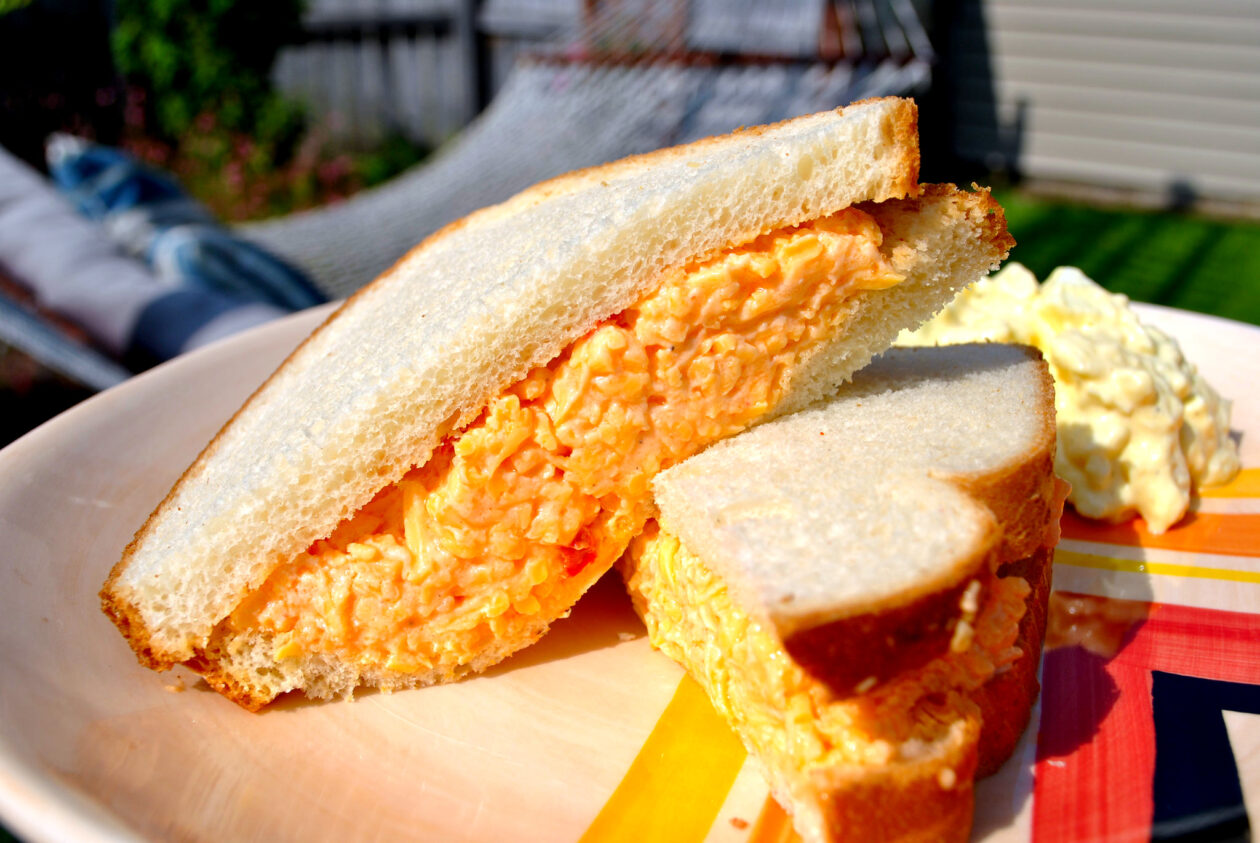




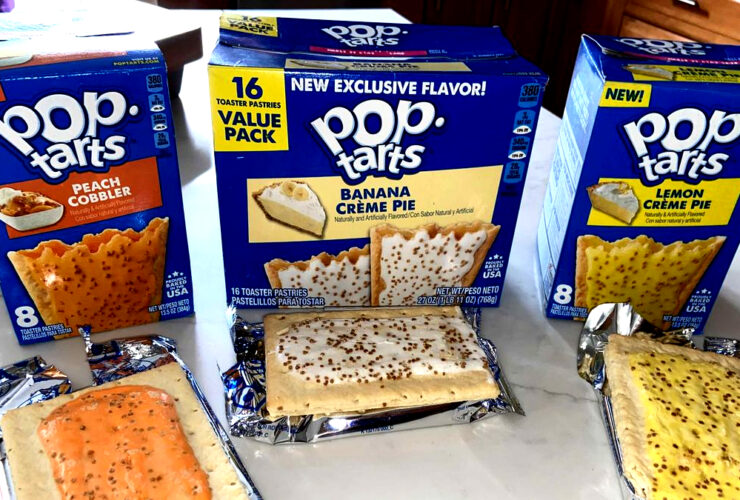


Leave a Reply
View Comments